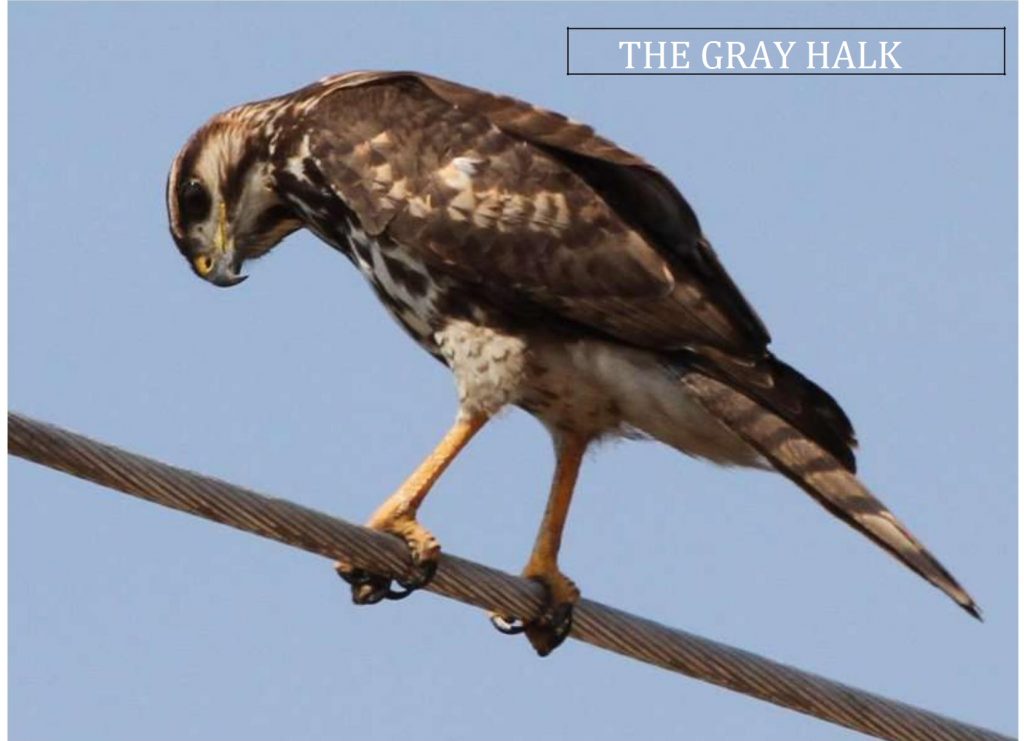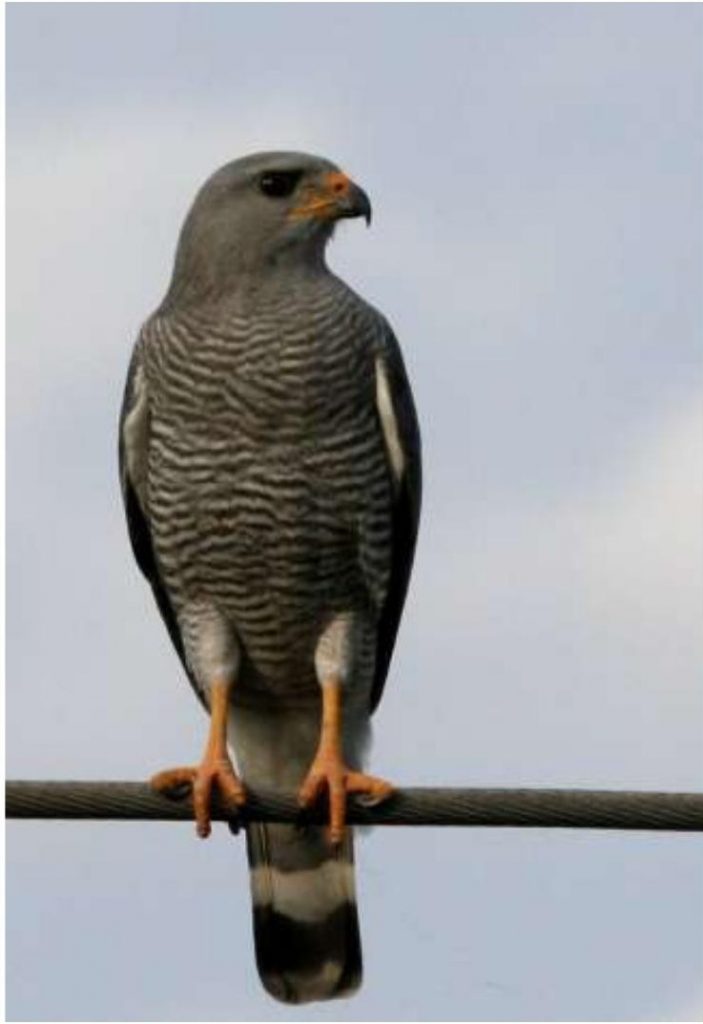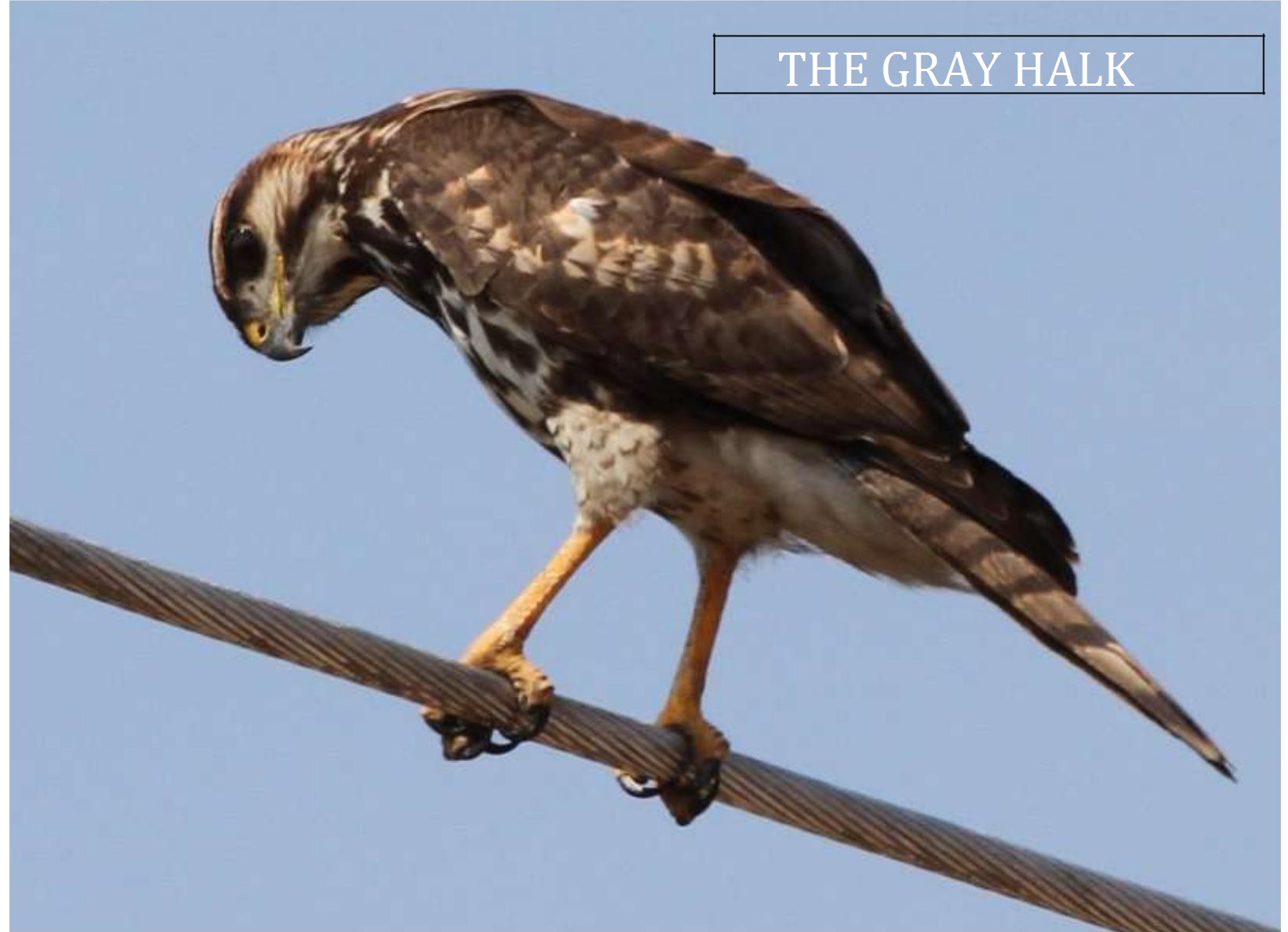By Howard Platt from the April 2011 Edition
 Power-lines or other such open perches along roadways are good places to see raptors – the top of the food chain among birds. Here on the west coast the most likely raptors to be seen are grey hawks. They are classed as Buteos, a group noted for its broad wings and sturdy bodies. In North America the group are usually called “hawks” while in Europe they are more commonly referred to as “buzzards”.
Power-lines or other such open perches along roadways are good places to see raptors – the top of the food chain among birds. Here on the west coast the most likely raptors to be seen are grey hawks. They are classed as Buteos, a group noted for its broad wings and sturdy bodies. In North America the group are usually called “hawks” while in Europe they are more commonly referred to as “buzzards”.
Most hawks are migratory, spending their summers in the USA and Canada but flying south for the winter. About the middle of spring there is a spectacular return as hundreds of thousands of raptors a day can be seen streaming north over the coast areas of Veracruz.
The grey hawk is a little different in that it spends all the year locally, with only a few moving up into the southern tip is the USA in the summer. They can be found all the way from the southwestern United States down to central Argentina.
The adult birds are up to two feet long and weigh about a pound, with the females being larger than the males. The body is a pale grey with fine light streaks across the front but the tail is much darker with three light bands across it. For the first year or so the immature birds look quite different. The young birds are many dark brown on the back with brown and white streaks of the front. The head and neck is streaked in buff and brown.
The grey hawk mainly eats lizards and snakes which are common all year round on the west coast of Mexico. They will also catch small mammals, frogs or even other birds when the opportunity arisen. Like all buteos they have very good eyesight, powerful talons and strong beaks. The talons are used for catching and killing prey and the beak is reserved for tearing the prey apart once it is dead. These hawks usually take care to keep their head and eyes away from prey like snakes until they are sure they are dead!
Grey hawk preference is for dry deciduous woodland or thorn scrub where they perch on a branch while they can watch to spot their prey. They have slight narrower wings and longer tails than most buteos with faster agile flight well fitting for hunting in open woodland. The open nature of coconut plantations suits them very well. They will then swoop down to make the capture and kill with their claws. Less often they will glide low over the ground hunting for food.
The grey hawk tends to be monogamous and they return to the same nest year after year. The adults split the task of raising young. The female incubates the eggs and cares for the hatchlings using her larger size to protect them from threats. The male does all the hunting for the family until the young are at least two weeks old. The process last a few months usually over the winter and into early spring.
Next time you are strolling along and see those eye looking down on you enjoy them while you can. You can expect them to swoop away as you get closer and move to a more distant perch as they regard you are a threat rather than food.

Download the full edition or view it online
Manzanillo Sun’s eMagazine written by local authors about living in Manzanillo and Mexico, since 2009





You must be logged in to post a comment.